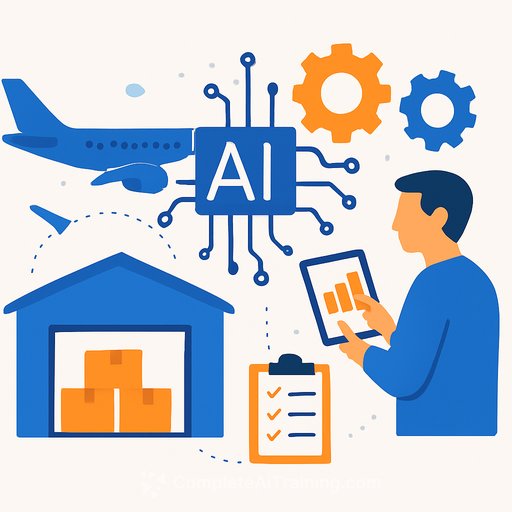1001 Raises $9M to Bring Predictive AI to Industrial Operations Across MENA
On October 20, 2025, AI startup 1001 closed a $9M seed round to speed up deployment of its industrial AI platform across the Middle East and North Africa. The round was led by MENA Ventures. The company was founded by a former executive from Scale AI.
For operations leaders, the pitch is straightforward: use AI to monitor equipment and processes, predict failures, and fix issues before they stop production. Early numbers from pilot customers point to a 30% cut in maintenance costs and up to 15% lower energy consumption through performance optimization.
Why this matters for Ops
Downtime steals time, budget, and credibility. If you're measured on uptime, OEE, and safety metrics, predictive maintenance isn't a nice-to-have-it's a direct line to fewer unplanned stops, tighter maintenance windows, and cleaner audits.
1001 is targeting sectors like energy and manufacturing where asset failures carry real cost. The platform's value sits in early detection, fast prioritization, and smarter maintenance planning.
What the platform does
- Condition monitoring: Ingests sensor and process data to track equipment health in real time.
- Failure prediction: Flags components likely to fail ahead of schedule so you can plan work orders, parts, and labor.
- Optimization: Recommends operating setpoints that reduce wear and lower energy draw.
Early results reported
- Maintenance costs: ~30% reduction via predictive scheduling and fewer emergency interventions.
- Energy: Up to 15% savings by tuning performance and eliminating inefficient run states.
If these outcomes hold at scale, you're looking at quick payback in high-throughput lines and critical assets (compressors, pumps, turbines, heat exchangers, CNC, and packaging systems).
Where the funding goes
1001 plans to expand its engineering team and deploy across core industrial sectors in the region. Expect faster integration cycles, broader equipment coverage, and more localized support as they build out the product and field teams.
How to pressure-test this for your plant or network
- Data readiness: Do you have clean sensor data (tags, historian access, sampling rates) for priority assets? If not, what's the plan to close gaps?
- Integration path: How will it connect to your CMMS/ERP (e.g., SAP PM, Maximo) and pass predicted failures into work orders?
- Latency: Is the detection-to-alert time fast enough for your process dynamics (continuous vs. batch vs. discrete)?
- Coverage: Which assets get modeled first, and what's the expected false-positive/negative rate?
- Security: Data boundaries, on-prem vs. cloud, and compliance with site access policies.
- Ownership: Who in Ops owns triage and response? What's the escalation path to Maintenance and Reliability?
Pilot plan that actually sticks
- Scope 1-2 critical lines or systems with clear failure modes and maintenance logs to validate predictions quickly.
- Define success metrics upfront: avoided downtime hours, maintenance cost reduction, mean time between failure (MTBF) lift, and energy per unit.
- Close the loop by auto-creating work orders with recommended tasks, parts, and time windows.
- Run A/B periods (with vs. without recommendations) to isolate impact on throughput and quality.
- Train the front line on alerts, thresholds, and SOPs so insights turn into action, not dashboard clutter.
Budget and ROI framing
Start with your top three downtime drivers and their cost per hour. Add parts, labor, and scrap. If predictive alerts prevent even a small fraction of those events, the math usually supports a fast payback-especially in continuous operations and energy-intensive assets.
On the energy side, a 10-15% reduction on high-load equipment can fund the rollout across additional sites. Tie savings to your sustainability targets to unlock budget from multiple lines.
What to watch next
- Regional deployments: Which plants and sectors in MENA adopt first, and how fast results generalize beyond pilots.
- Model transparency: Root-cause explanations and recommended actions that maintenance teams trust.
- Time-to-value: Weeks, not months-fast integrations and prebuilt connectors will make or break adoption.
If you're evaluating options, start with a narrow scope, measure hard outcomes, and expand based on proof-not promises.
Next step: If your team needs a quick upskill on AI in operations and automation, explore practical training paths here: AI upskilling for operations teams.
Your membership also unlocks:






